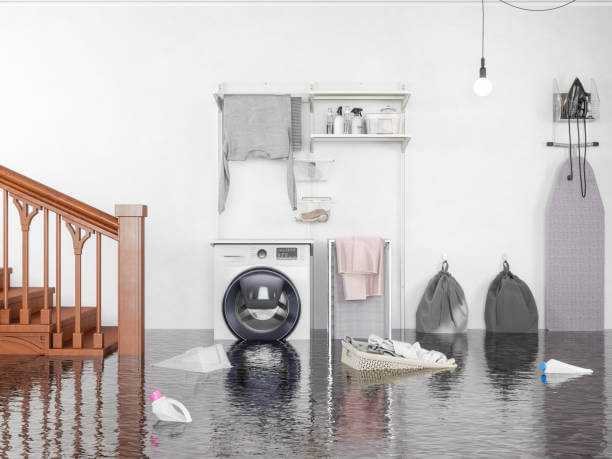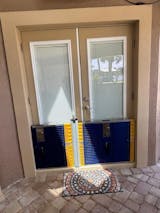A basement flooding may make even the most self-assured homeowner feel powerless and anxious. Use these helpful hints to determine what to do if your basement floods.
Unexpected problems in your house are common, so know that you're not alone if anything breaks, leaks, or makes an odd noise in your basement.
We've compiled a list of clues to look for and what to do about basement flooding. Here are some things you may do if your house has flooded, ranging from leaky pipes to broken pipes and anything else that could lead to basement flooding repair.
Turn the electricity off
If there is water in the basement, turn off all power sources in the area, including electricity and gas. When the power is on, never enter a flooded area. If you are unsure how to turn these places off, contact a certified electrician before entering the room.
Contact the insurance
Call your house insurance carrier and report the basement flooding. Check the limitations of your coverage, the amount of your deductible, and the claim processes.
Protect yourself
Wear boots and gloves regardless of the source of the water. You can also take extra precautions by wearing a mask. If the water is higher than your knees, hip or chest waders may be handy. Take caution when walking in the flooded area, since it is likely to be a sliding hazard.
Know where the water came from
Find out where the water came from. If a busted pipe is the cause of the flood, turn off the water to the basement. If there is water in the basement after a rainstorm, wait until the storm has passed before assessing the damage and beginning repairs.

Check the drainage
Check that your basement's floor drain did not become blocked during the flood. Keeping it open and operational will aid in the drainage of the water.
Start pumping the water out
Choose a method to drain or pump water from the basement. You can use a sump pump, a pool pump, a wet/dry vacuum, or a mop and bucket depending on the amount of water. Sump pumps, which are positioned in the lowest portion of a basement, operate by directing water away from the house following a flood. Water can enter the property via the ground without a sump pump, causing flooding in the basement and other areas.
Soak the rest of water
After removing the majority of the water, soak up the remains with a towel or sponges. Why not enlist the assistance of a family member or a neighbor? An extra pair of hands might help speed up the water cleanup process.
Stay away from electric appliance
Even if the power is off, never touch electrical objects such as televisions, stereos, or lamps. Allow the electrical appliance to dry in place before consulting an electrician or other trained contractor to assess the extent of the damage.
Take out all the items that have been affected by floodwater
Remove damaged things from the basement and place them in a well-ventilated room to dry. It is better not to dry things out in the basement, which is already moist. If the weather permits, a sunny location may be the ideal choice. A decent rule of thumb is to allow 48 hours for goods to properly dry. If they're still wet after this period, either give them some more time or consider dumping them to minimize mold and mildew growth. If you were storing items in cardboard boxes, save the contents and trash the cardboard containers (which are prone to bacterial development).
Get rid of the carpets
Remove any carpeting from the flooded basement as quickly as feasible. Carpeting, if not removed soon, might impede the floor beneath from drying. Although drying these materials might be challenging, damp carpets can occasionally be rescued. Consult a restoration professional or a carpet cleaning contractor for advice on how to properly dry it so that mold and mildew do not grow.

Be patient
Allow several days for the basement to dry before attempting any substantial basement flooding repair. Open windows and doors to provide as much ventilation as possible, and use fans to circulate air to expedite drying time. You may also rent a dehumidifier from your local home improvement store.
Clean the flooded basement thoroughly
Wash down the floors and walls to eliminate any filth that the water left behind. To prevent mold from spreading, remove any damp or damaged drywall and insulation.
Ask for assistance
If the water is several feet deep or you notice mold or mildew growing, you should seek assistance. If you've spent time waterproofing your basement and it is still flooded, or if you're unsure what caused your basement to flood, it's a good idea to seek expert advice to better understand the basement flooding remedies accessible to you. You may choose to engage a plumbing contractor, a basement waterproofing business, a catastrophe repair professional, or a team of specialists depending on your individual case. whether your house insurance provider is involved, find out whether they have a preferred vendor for flood mitigation.
To prevent floods in the future, consider modern flood control solutions like flood barriers and flood gates. These efficient yet straightforward devices seal any passage and prevent floodwater from getting into your house. You can you them against basement flooding, garage floods as well as for the rest of your house.
Contact Dam Wasy now to learn more about modern flood control solutions. Let our team help you make informed decisions and suggest modern flood barriers and other anti-flooding solutions that will fit your case, measurements and expectations perfectly!
Flood Barrier Door Dam - Ultimate Flood Gate

$1,260.00
DAM EASY® FLOOD GATE - DOOR DAM Floods are becoming more common around the world. What was once a 100-year phenomenon is now a seasonal trend that homeowners must deal with. That’s EXACTLY why you need this Dam Easy Flood… Read More



















